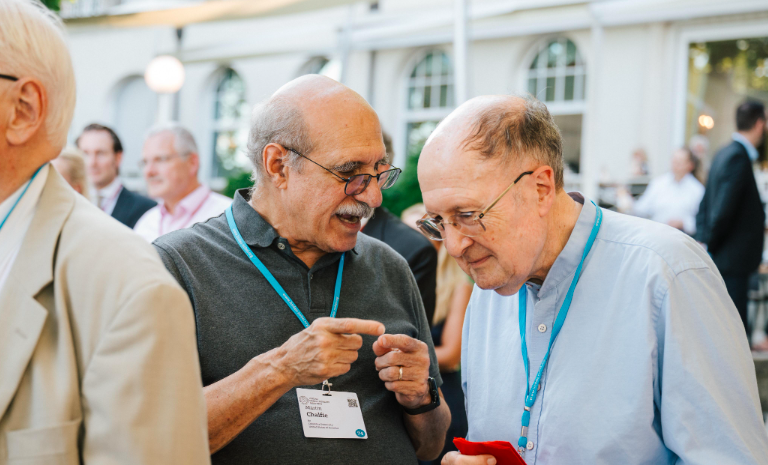 The 2018 Nobel Prize in Chemistry, Molecular biologist Sir. Gregory P. Winter with Prof. Martin Chalfie 2008 Nobel Prize in Chemistry.
The 2018 Nobel Prize in Chemistry, Molecular biologist Sir. Gregory P. Winter with Prof. Martin Chalfie 2008 Nobel Prize in Chemistry.
The story of monoclonal antibodies is a testament to the transformative power of scientific innovation combined with strategic business decisions.
Monoclonal antibodies (mAbs) are lab-made proteins that act like human antibodies and can be used to treat a variety of diseases, including cancer, autoimmune diseases, and infectious diseases.
They are designed to target specific antigens on cells, like those found on cancer cells, and can either attack the cells directly or deliver other treatments like chemotherapy drugs.
These targeted therapies have changed the landscape of medicine, offering hope to millions suffering from diseases once deemed incurable. As Sir Gregory Winter, the Nobel Prize-winning British scientist, explained at the Lindau Nobel Laureate meetings, the development of monoclonal antibodies has been one of the most significant revolutions in medicine in recent history.
It’s a story of how science, technology, and policy intertwined to create a new class of life-saving drugs. Sir Gregory recalls how the journey started by saying, “Until the 1980s, most drugs were chemicals derived from plants or synthesized in labs. The advent of recombinant DNA technology in the early 1970s opened the door to producing human proteins in the lab, and that was the beginning of a new era.”
He added that these innovations led to the creation of drugs like recombinant insulin and erythropoietin, but the real breakthrough was the development of monoclonal antibodies, highly specific molecules capable of binding to disease targets with precision.
He noted that the initial attempts involved using animal sera, but these proved problematic. “Animal-derived sera could provoke severe immune responses in patients, which limited their use,” Sir Gregory explained. The breakthrough came in 1975 when César Milstein and Georges Köhler at the UK’s Medical Research Council (MRC) developed a method to produce monoclonal antibodies from hybrid cells, called hybridomas.
“That was a game-changer. It meant we could generate large quantities of a single antibody species, highly specific and pure.” Sir Gregory said he however indicated that these mouse antibodies often caused immune reactions in humans, leading to the question of how to make them compatible.
“My work focused on developing techniques to humanize these antibodies. We found that transplanting the antigen-binding regions from mouse antibodies into human antibody frameworks could reduce the immune response significantly.”
His team’s work culminated in the creation of fully human antibodies using phage display technology a method that involved screening vast libraries of human antibody genes. “This allowed us to select antibodies directly from humans. It was like mimicking the natural immune response in a test tube.” Sir Gregory noted one of the most notable outcomes of this work was the development of adalimumab, marketed as Humira.
“Humira is a prime example of how scientific innovation, combined with strategic licensing and commercialization, can produce a blockbuster drug. Since its approval in 2002, it has generated more than $230 billion in sales, making it one of the most successful drugs in history,” Sir Gregory stated.
For Kenya, where the burden of chronic diseases such as cancer, rheumatoid arthritis, and autoimmune disorders is rising, these therapies offer both hope and challenges.
“The key is to make these innovations accessible. Developing local capacity to produce monoclonal antibodies could dramatically reduce costs and improve patient outcomes," Sir Gregory emphasized.
Today, monoclonal antibodies are used to treat a wide range of diseases, from cancer to migraines, and continue to evolve.
“The future lies in making these therapies more accessible and affordable, especially for developing countries. Science has the power to change lives, but it must be accompanied by policies that promote innovation, protect intellectual property, and ensure equitable access.”
As Kenya’s health sector advances, the lessons from this global story are clear, embracing biotechnology, fostering local innovation, and implementing supportive policies can turn scientific breakthroughs into real health benefits for all.











